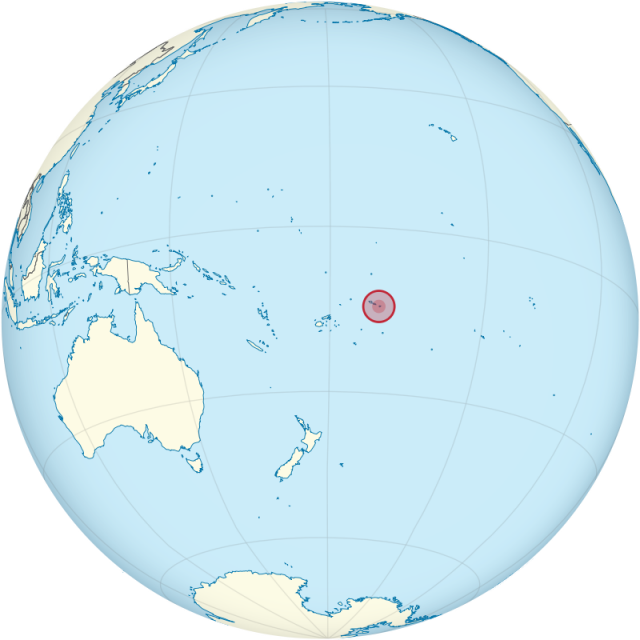American Samoa (USA)
AT A GLANCE
Name: Samoa is a native Polynesian word.
Capital: Pago Pago
Size: 77 sq. mi. (199 sq km)
Population: 54,194 (2016)
Statehood: Unincorporated
Electoral Votes: 0
U.S. Representatives: 1 (nonvoting)

THE PLACE
American Samoa is a group of seven islands located about 2,600 miles (4,184 km) southwest of Hawaii. The U.S. federal government administers the islands, which are named Tutuila, Aunuu, Ofu, Olosega, Tau, and Rose. The seventh island, Swains, is privately owned by an American family that has lived there since 1856.
The capital of American Samoa, Pago Pago, is located on the island of Tutuila and has one of the most beautiful harbors in the South Pacific Ocean. Old coral reefs form Rose and Swains Islands, and extinct volcanoes form the remaining islands. Most of American Samoa is mountainous, and only about a third of the islands can be used for agriculture. The best soil lies in the valleys between the mountains.
American Samoa has a tropical climate and receives more than 200 inches (508 cm) of rainfall every year.
THE PAST
Polynesians settled American Samoa more than 2,000 years ago. They arrived in boats from eastern Melanesia and settled on the habitable islands. In 1722, European explorers visited the islands. Later, in 1878, the islanders agreed to allow the United States to use Pago Pago as a naval repair station.
The United States began to trade with the Polynesians, and in 1899, the United States, Britain, and Germany signed a treaty that divided the Samoa Islands among them. At first, the U.S. Navy directly governed American Samoa. The Department of the Interior took over this role in 1951 and continued to appoint governors until 1978, when American Samoans first elected a governor of their own choosing.
THE PRESENT
American Samoa is an unincorporated territory of the United States. Its residents are not U.S. citizens, but they can travel freely throughout the United States. American Samoan residents do not pay taxes to the United States, but they receive considerable amounts of financial aid from the U.S. government.
American Samoa has a strong economy based on fishing. Approximately 96 percent of American Samoa's exports are fish or fish products. American Samoa also produces coconuts, bananas, and taro
in its most fertile regions. Since 1960, when the first resort and large airport was built, travel to the islands has increased.